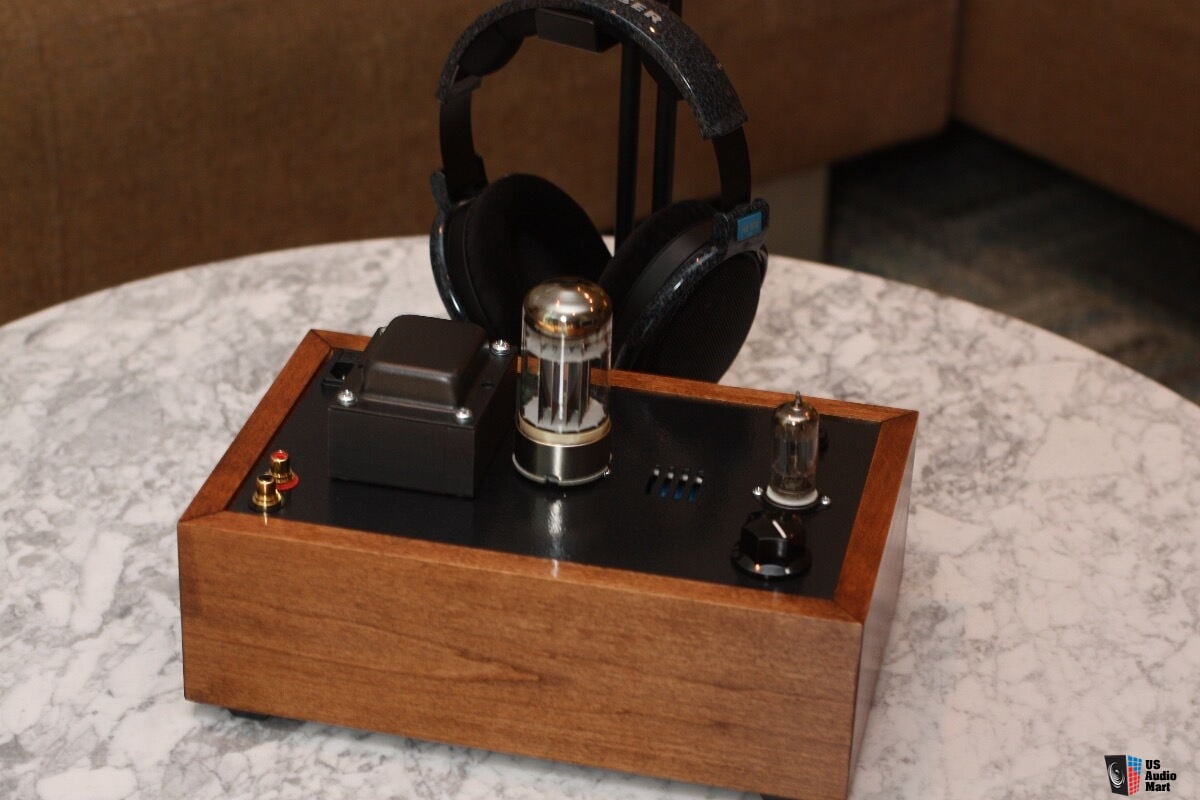Darkvoice 336se Vs Bottlehead Crack Headphone

Compared to the Bottlehead Crack, I've always enjoyed the Darkvoice more. The base Crack was always been a bit too soft, polite, and sweet for me when I've auditioned in the past, while the Darkvoice gave a more forward sound with much better impact, speed, and attack overall.
Darkvoice 336se Vs Bottlehead Crack



Darkvoice 336se Schematic
With my Superlux HD660, both amps did fine, however, being that the HD660 is a rock headphone, I give the Crack an edge here, although the Torpedo beats both of them in this case. My Beyer DT770 AE is very low impedance, and not suited for either of these amps, however, the bass is so bloated when connected to the 336c, that it is sort of fun. The H5 has a similar layout to the bottlehead crack, I know many of you will notice this. However this amp uses different tubes and can be used as a pre-amp. The input RCA’s are towards the front of the chassis, near the volume control, the pre-amp outputs are at the back near the power cable input.
Darkvoice 336se Tube Rolling
Well, both are OTL (output transformer-less) tube amps, made by Little Dot in China. The Mk IV SE is supposed to be an upgraded version of the Mk III, with a premium price. So what are the differences?
[1] upgraded tubes - instead of stock GE5654s, you get a pair of Mullard M8100s, and also updated 6H30P-i power tubes. It should be noted that my LD Mk III came with stock RCA EF95 tubes (which was a pleasant surprise, because they were 70s vintage. I might have lucked out).
[2] The 1/4 plug on the SE is a Neutrik
[3] The SE has 'upgraded' RCA connectors
[4] The SE has pretty gold tube protectors
[5] The SE has a different volume knob
In theory the Mk IV SE is supposed to have a different ALPS pot than the Mk III, but every internal shot I have seen of the SE has the same pot as my Mk III.
David ZheZhe (Little Dot seller) claims the SE has 'premium circuit component upgrades in key signal path locations'. As to what these upgrades actually are (apart from the ones I noted above), your guess is as good as mine.
So are the differences worth the extra money?
As you start going up the Little Dot product ladder, you begin to slowly start losing the price-performance advantage you have with the Mk III.
You can get M8100s in abundance on ebay for $20-40 for the pair. The upgrade to the Elektro-harmonix 6H30P-i isn't really a deal unless you get a NOS Elektro-harmonix, since the new 'reissued' EH 6H30P from the Reflektor plant are, well, reissues.
If you are upgrading power tubes you might as well get a couple of Novosibirsk Gold Grid 6N6P-i from the 70s/80s (before the Wall came down!) for $10-15 for a pair (keep in mind that driver tubes typically last longer than power tubes, and the Gold Grids with the 'OTK' quality symbol were engineered to last a while).
Who should get this?
Those that want to experience OTL tube sound, and don't have the money to get a Woo Audio WA3, a Woo Audio WA2 or an Eddie Current Zana Deux.
Also those who own a Sennheiser HD600 or HD650, the pairing is excellent.
Keep in mind that the Little Dot Mk III is a better bang for your buck than the Mk IV SE. Also keep some money aside for tube rolling.
Who should not get this?
Folks getting their first amp (get a solid state amp!) or those who run orthodynamic headphones as their primary headphone (bad pairing, as are the Beyerdynamic T90 and T1).
Also folks whose budget will not extend to tube rolling.
And this certainly isn't 'endgame' material, if that is your goal.
Folks wanting the ultimate price performance ratio should probably look at the Little Dot Mk III. And those who want a transparent amp without coloration or distortion should not touch this with a 10 foot pole.
Who are the competitors?
The Bottlehead Crack, of course, although the Crack is a DIY OTL tube amp. And the Valhalla 2 is a serious competitor (gain switch, preamp out) especially if you are looking for a more transparent sound, as is the Woo Audio WA3 (although that costs about 2x the cose of the Mk IV SE).